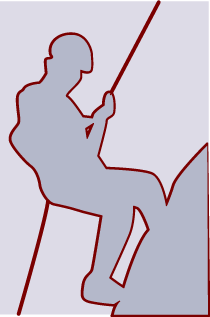 If you’ve been following dreams-/goals-oriented self-help material for any length of time, you’ll undoubtedly have heard the mantra that dreams come true. Any serious coaching, whether it be life, wellness, abundance or performance, addresses the fundamental idea — the very foundation of success, in fact — that dreams come true. And they do. Dreams do become reality, but not without some help.
If you’ve been following dreams-/goals-oriented self-help material for any length of time, you’ll undoubtedly have heard the mantra that dreams come true. Any serious coaching, whether it be life, wellness, abundance or performance, addresses the fundamental idea — the very foundation of success, in fact — that dreams come true. And they do. Dreams do become reality, but not without some help.
I’ve been thinking a lot about dreams, life purpose and goals lately. Here in the Northern Hemisphere, we slid past the Winter Solstice on our way to our seasonal celebrations to wind down the old year and ring in the new. Truth be told, this is less a time of celebration for me and more a time of intense inner work.
The Winter Solstice is a time that offers us a great opportunity to contemplate life transitions and to let go of our unwanted baggage before moving on to a new beginning. I take this work seriously. Not in a furrowed brow sort of way, but I certainly don’t miss the opportunity to look inward during the seasonal markers.
This year is going to be a game changer for me personally and for Living Intentionally as a business. If you’re contemplating major changes in your own life, know that I feel for ya. Transitions can be fun or they can be a challenge. The biggest and best transitions are usually a healthy mix of both.
Okay, so you’ve decided that you need a change and all the above sounds great. Except maybe you don’t know what your life’s purpose is yet. What if you’re in that place where you know you need a change, but you don’t have the foggiest idea as to what that change should be? What then?
The good news is that there are a few things you can do to discover your life’s purpose. Let’s look at a few key points that will help you to discover or review your life’s purpose.
1. Look In The Past
The first thing I’d suggest is to look in your past. Take a look back at your peak experiences — times when you felt truly powerful joy and passion — and narrow it down to your top three experiences. What is the common thread within each of these experiences? Within these peak experiences of your life, there will be a common pattern that is shared across all three. Figure out what that pattern is and think about its significance.
2. Look WAY In The Past
When we look back far enough, we’ll find a crucial time in our life when we became wounded in some deep and profound way. Most of us spend our entire life repressing our wounds or trying to run away from them. The reality is that because these wounds are a part of us, no matter how hard and fast we run, there we are. Instead of running or repressing our wounds, let’s take some time to really think about them and understand how they shape our perception of our world.
The idea here is to examine our ‘shaping wound’ and to think of how that wound makes us uniquely qualified to help or serve others. In my case, for example, I was abused and bullied in a myriad of ways from an extremely early age, which caused me to distrust those in positions of authority. This, in turn, caused me to relentlessly pursue a path of self-healing. The result? I am uniquely qualified to help guide those who intend to do all their own work in their journey of self-healing and in reclaiming their position of power and sense of Self.
In addition to contemplating how your shaping wound makes you uniquely qualified to serve others, you can also project forward to the future, to the end of your life. How would you want to be remembered by others? What would you like to see written about you as an epitaph? What would move you and make you feel something?
3. Direct Access
The next technique to use is what I will call direct access. If you’re already used to meditating on life’s great questions and downloading answers, this one will be a no-brainer: Ask Source/the universe/God/<insert your preference here> for guidance regarding your true life’s purpose. Then contemplate or meditate on the question and avail yourself to being given the answer in any number of ways. It could be as simple and as quick as a flash of insight or it could be a paragraph catching your eye in a newspaper.
The key here is to be willing and open to receiving the answer from whatever guides you choose. It’s incumbent upon you to trust the answer that comes and not be too analytical about it. Open-mindedness is essential when it comes to deep inner work.
4. Meditation
Similar to direct access is meditation or pure contemplation. Instead of asking Source or some external force for guidance, however, this is all about turning your focus inward. The idea is to pose yourself the question, e.g., “What is my life’s purpose?”, and then begin your meditation/contemplation. It’s important not to think about the question or possible answers; otherwise, you’re really not meditating. Generally speaking, insights that come during a meditation come as a sudden knowing. If you have to think about it, it’s your conscious mind at play. Your ego is getting in the way of the truth.
When you’re sitting with your question, be fully aware of your emotional state and your physical response. Any feelings of resistance that come to your awareness may represent a misalignment of intention. Note, however, that I used the word may. Feelings of resistance can also be caused by the chatter of your Inner Doubter popping up to instill uncertainty and doubt in the realization of your dreams.
If you’re truly feeling a misalignment with your intention when you meditate/sit with the question, explore various alternatives and notice any shifts in the resistance. Ultimately, genuine misalignment will be felt in the stillness of the gap/breath. The Inner Doubter is a construct of the ego and, as such, is present in your normal, waking consciousness.
5. Lingering Dreams
Unfulfilled dreams can linger on in our psyche much like unrequited love. Lingering dreams need to be addressed. Dreams are good; dreams that we ignore are not. In that light, should you find a dream that has been shelved for years and years, you’ll want to dust it off, sit with it, examine it deeply and get a real sense of what you want to do with it. Be proactive about either pursuing the dream or letting it go all together.
Lingering dreams can be similar to Bucket List items that you think you’d really like to do some day, but you don’t really have the time, patience or gumption to make a reality. Unfulfilled bucket list items should be rejected as just not going to happen. So it is with our life’s dreams, goals and our life purpose. At some point, you have to make a decision.
Something to consider is how to move from dreams to reality. Because of the nature of our universe, our thoughts strive to become real. Given enough focus and action, we can accomplish pretty much anything. So what takes a dream from something nebulous to concrete? What makes them real?
Dreams ⇒ Reality = Attitudes/Beliefs + Strategy
The first tool in our toolbox is evaluating our attitudes and beliefs to determine whether they’re going to help us or hinder us in realizing our dreams. If you’re like many others out there, you may discover that your shaping wound turns out to be a limiting factor in how you frame your perception of the world. For example, we may experience fear in how we view our possible future. If we don’t deal with that fear, it will be our undoing.
When we’re dealing with fear, it’s important for us to deeply learn that fears are a mental projection. We tell stories of a possible future and then paint them with imagery and plot lines of all that can go amiss. All that seems reasonable on the surface — after all, we use fear as a useful tool for avoiding real threats, right?
If we move past evolutionary fight/flight responses to immediate situations, we can take a more measured look at fear itself. Fear is a construct of the ego that recounts experiences from our past and projects them to a possible future. Are you with me so far? This is not a future that is etched in stone. It may not even be possible at all! That doesn’t stop our ego from creating rich tapestries of doom and despair. The ego has a job and that job is to stop you from doing anything that may cause pain.
The ego has its job, yes, but it can get in the way when we really need it to take a back seat and be quiet. Fears projected into a possible future are all just what-if scenarios being created by our Inner Doubter. Our Inner Doubter is that part of us who would, because we might fail, prefer we do nothing at all. Doing nothing at all is preferred when we’re contemplating running away from a tiger (thereby triggering a prey response in the tiger), but it certainly won’t help you to write that book you’ve had inside you for the last 20 years. Many have been eaten by tigers; I’m unaware of anybody who was eaten by an unwritten book.
It’s important for us to put our fears into perspective and learn to recognize when they’re getting in our way. Ultimately, one can only succeed by doing the inner work necessary to put our fears into our past and keep them there. There are a number of great tools that can be of help when trying to address inappropriate fear responses: NLP, hypnotherapy, self-hypnosis, meditation, talk therapy, etc. Each have their strengths and weaknesses. I will say that learning to be fully present and in the moment with your fear is incredibly empowering. Presence as a healing tool cannot be overstated.
Finally, it’s important for us to look at the strategies we use to bring our dreams to fruition. If our strategies are poorly planned or poorly executed, we can get very stuck indeed. Ultimately, the solution for our strategies is to break them down into projects that we can more easily manage:
- See the desired outcome.
- Reverse-engineer a possible path from the outcome to your current position.
- Place likely milestones along the path that create the breadcrumbs of your journey.
- EXECUTE, EXECUTE, EXECUTE!
Planning is not something to take lightly. If you want to build a Space Shuttle, you don’t just grab an ACME rocket engine and start hammering together bits of steel to create the fuselage. You need a plan. Plans should be written out in as much detail as you can muster for a given time. By getting it out of your head and into a notebook or database, you give yourself the best chance of capturing all the necessary details. Moreover, once you’ve written it down, it won’t get lost in the clutter of your mind.
There are a lot of great tools out there that can help you plan your projects. I use mind mapping software, project management software, tools for outlining and writing and others. The biggest thing, however, is to have a process and stick with it. If you’ve put together a process and keep running into resistance, go back to the earlier steps in the article to help you to determine whether this is a misalignment of your intention (which suggests you may need to change direction) or whether it’s just your Inner Doubter getting too noisy (more inner work is necessary).
Much love,
trane


Leave a Reply